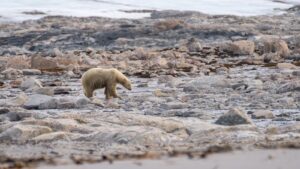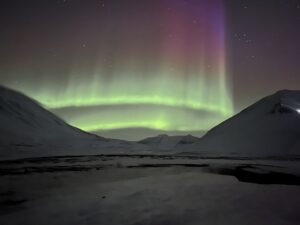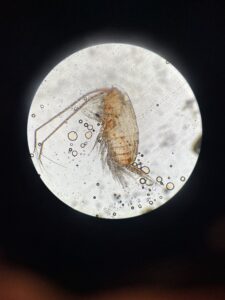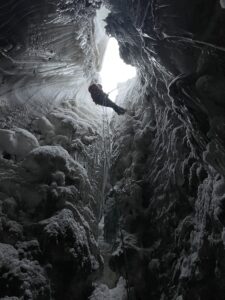- Molecular and Applied Biotechnology M.Sc.
- Norway, Longyearbyen
- UNIS Svalbard
- 06/2023 – 04/2024
Application/Finding an Internship
The EU project FACE-iT is an international collaboration among several research institutions aimed at studying climate change in Arctic fjords across various trophic levels. Upon discovering the project online, I came across a thesis topic advertised on their website and promptly contacted the responsible professor. Following an online interview, I received confirmation of the suitability of the master thesis project. While the university regularly advertises thesis topics on their website, it’s also beneficial to reach out directly to professors to explore potential topics. Fortunately, I had previous experience with many professors at the University Centre in Svalbard (UNIS) due to my highly recommended bachelor exchange semester there.

© Lina Lettau
Accommodation & Living Expenses
As a UNIS student, you are automatically allocated housing in the student dormitory, managed by Samskipnaden. Applications can be submitted through their website, offering various options, including a single room with a shared kitchen for approximately 10 people (510€), sharing a room with one other student, or one to two-person apartments with individual kitchens. Living expenses in Longyearbyen are on par with mainland Norway, making them approximately double the cost of living in Germany. The local supermarket impressively stocks a wide range of fresh fruits and vegetables for those who can afford them.

© Lina Lettau
Given the town’s small size, there aren’t many other ways to spend your money (except for drinks at one of the four bars), so most of my expenses went towards food and outdoor equipment.
Everyday Life/The Internship
My internship focused on marine molecular ecology, leading to a varied daily routine. This ranged from boat samplings in the summer to molecular lab work in the autumn, and data exploration during the polar night. Fieldwork days can be quite extensive from my experience. Nevertheless, the average Norwegian workday appeared to be a standard 9 to 5, except when the skies cleared after an extended period of overcast weather. In such cases, the department would empty as everyone ventured out for skiing or hiking. In terms of social life, if you come to Longyearbyen thinking you’re at the end of the world and should lead a hermit-like existence, think again. You’ll be living in student housing with approximately 200 people, and activities like hikes, ice climbing, skiing, snowmobile tours, games, dinner parties, knitting, puzzles, and movie nights are popular. Weekends were often spent in rural cabins outside of town.
Free Time/Tips
Two months before:
Ensure your passport is up-to-date. No visa is required, but you’ll be traveling outside of the EU.

© Lina Lettau
Book your flights with SAS or Norwegian; if you’re under 26, they offer youth discounts.
Apply for a certificate of good conduct (Fuehrungszeugnis) in English and bring it with you. Guns are carried for polar bear protection outside of town, and you’ll receive rifle training upon arrival (no prior experience needed).
Two weeks before:
Stock up on items that might not be available or could be expensive in the one and only super market Longyearbyen. For me, this included tea, dried soy and seitan, drawing supplies, batteries, tech equipment, toiletries, fairy lights, analog photo films, guitar strings, and hair scissors.
Join all relevant Facebook groups, as Longyearbyen heavily relies on them. The most important ones include Ros & Info Longyearbyen (providing information on ongoing events and occurrences in town), Kjøp/salg/bytte/gi bort – Longyearbyen (an online second-hand marketplace), and Svalbard studies spring/autumn semester 20XX (with “XX” representing the year, depending on when you are here).

© Lina Lettau
Upon Arrival:
Explore Bruktikken, a donation-based free shop with a diverse range of items, including clothing, books, equipment, decoration, electronics, and more. You can even find second-hand bedsheets and towels there, so don’t overpack. Pro-tip: Work there and sort through the latest donations for yourself while earning money.
Become a member of Svalbard Turn to access the gym, swimming facilities, climbing, and various social sports.
Attend Sprakcafe on Mondays in the library to practice Norwegian while mingling with locals in town.
I also warmly recommend thoroughly reading the UNIS website section on Arrival and living in Longyearbyen – UNIS.
Conclusion:
My research experience at UNIS in Longyearbyen was a valuable opportunity that deepened my understanding of climate change in the unique Arctic ecosystem of Svalbard. Natural sciences and the great outdoors converge in a way that few other places on earth offer.


Leave a Reply